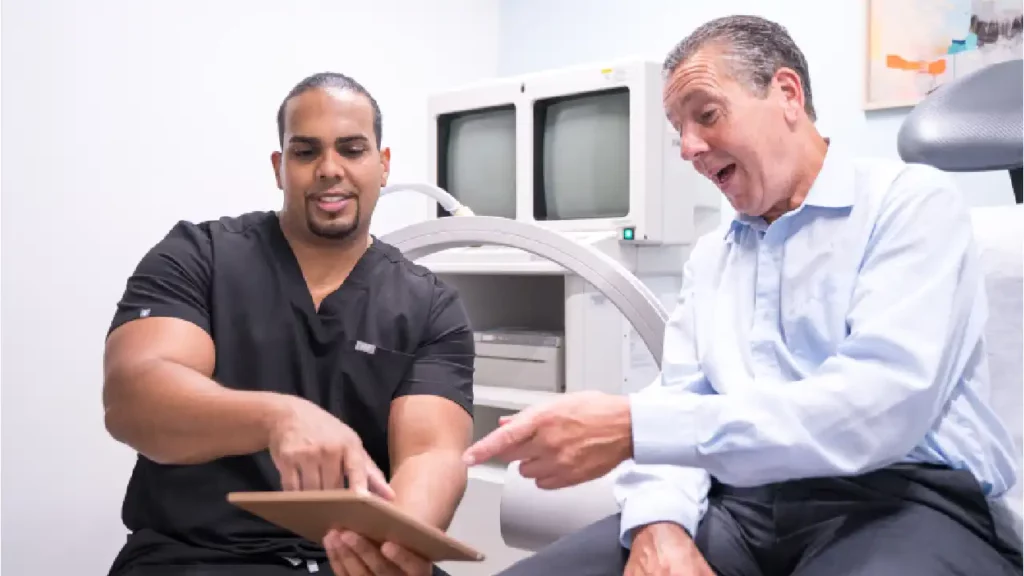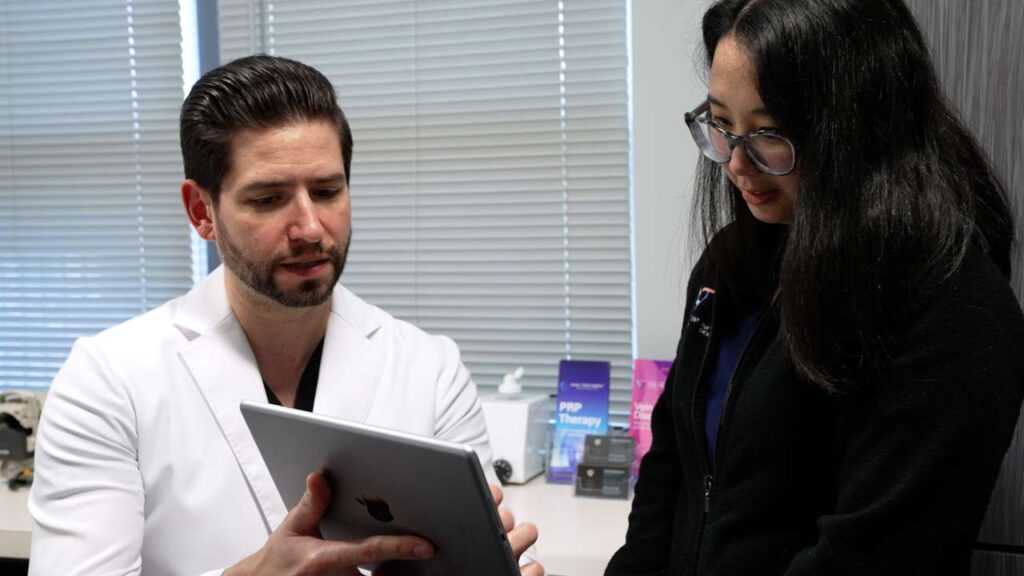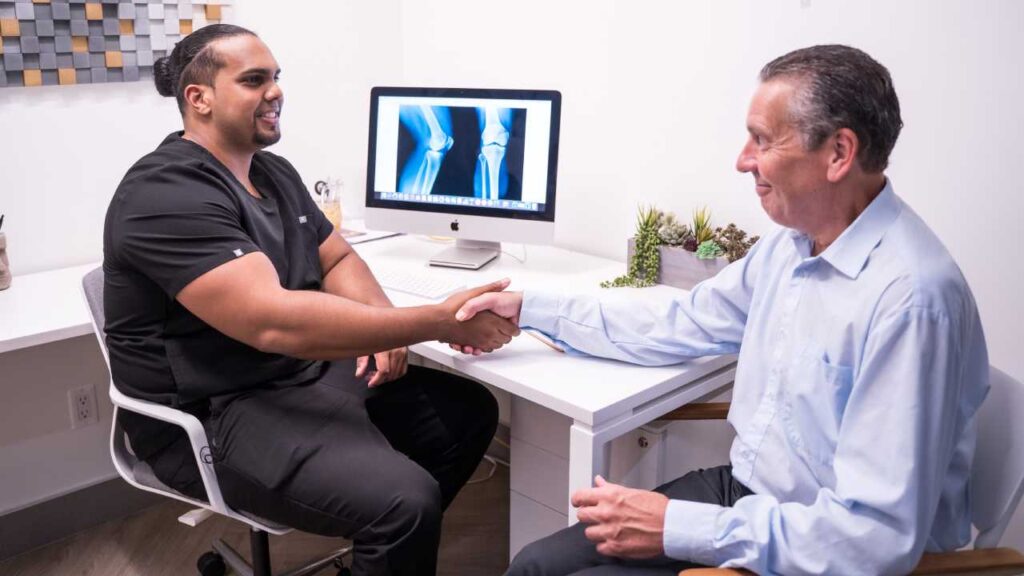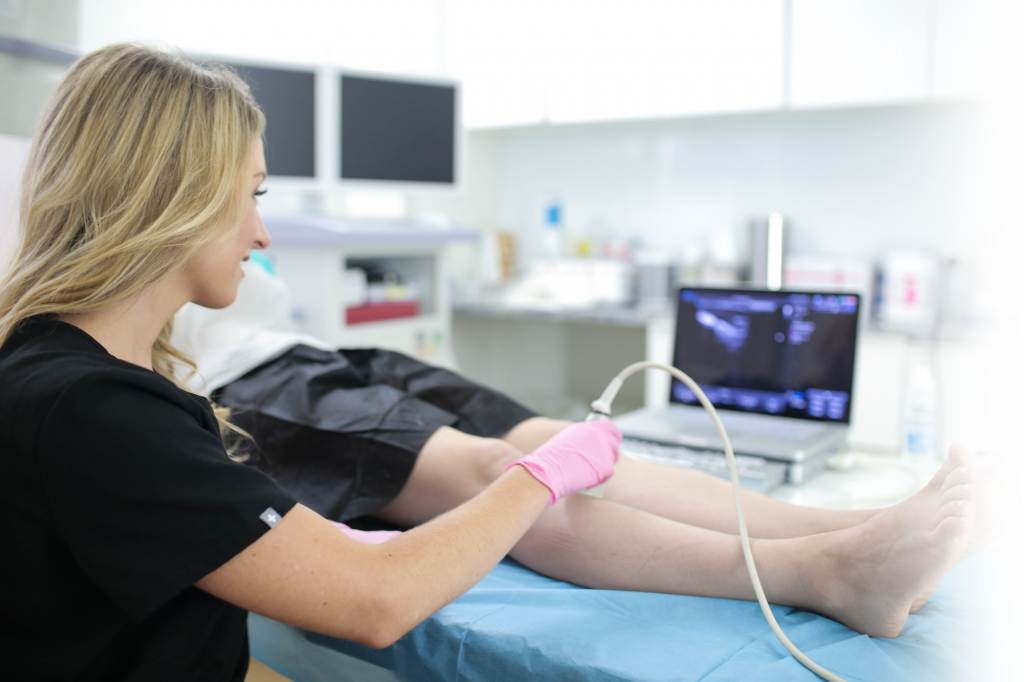Can I Just Ignore the Veins Popping Out on My Legs?
Varicose veins are a pain, literally and figuratively. They cause cramps, aches, heaviness, and swelling in your legs. They also prevent you from confidently baring your legs in spring and summer. Since no one loves how they look, patients often mistakenly assume that seeking treatment is a matter of vanity. But when varicose veins start popping out on the legs, it’s a clear indication that your circulation is impaired.
It’s also likely that more varicosities will develop since vein disease is typically to blame. In addition, varicose veins can start out asymptomatic and progress to involve venous ulcerations, stasis dermatitis, blood clots, and profuse bleeding. Don’t ignore varicose veins. Seek prompt relief from our minimally invasive vein doctors in New Jersey by clicking HERE.
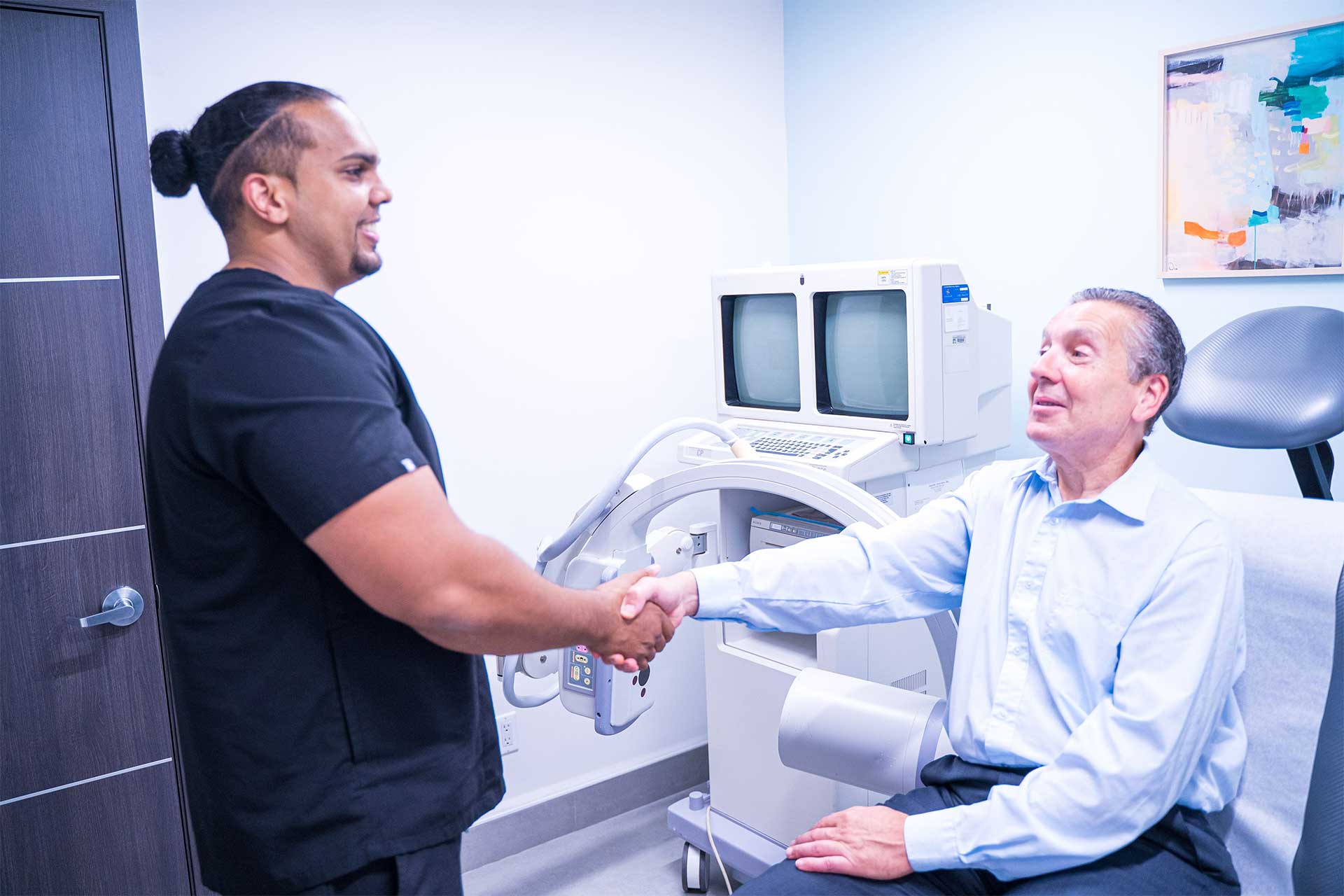
What Are the Varicose Veins Stages of Progression?
With varicose veins, stages of progression differ from one patient to the next. Some patients have no symptoms other than the visible veins near the surface of the skin. Others have multiple, debilitating symptoms. The number and severity of symptoms do not always correlate with the severity of vein disease, so see a vein doctor about your varicose veins, even if your symptoms are mild. Here are clues to determine whether your varicose veins have reached the stage of serious complications.
- Early Complications:
Bulging, thick veins accompanied by heaviness, cramping, itching, aching, or restlessness in the legs
- Advanced Complications:
Leg swelling, hyperpigmentation, venous ulcerations, lipodermatosclerosis, stasis dermatitis (venous eczema)
- Severe Complications:
Bleeding that’s hard to control, blood clots, deep vein thrombosis (DVT), or pulmonary embolism
Is Varicose Veins or Spider Veins Treatment Always Required?
Spider veins and varicose veins are often caused by Chronic Venous Insufficiency (CVI). If you don’t treat this disease, you’ll have continual blood pooling in your veins, causing more damaged veins to develop. In addition, the disease can progress to include the serious complications listed above.
Some spider veins don’t require treatment when they’re caused by things like sun damage or injury to the surface of the skin. In these cases, treatment might be a matter of preference. But varicose veins or spider veins caused by CVI are important to treat, especially since qualified vein doctors treat the vein disease simultaneously, when eliminating those visible veins. Our NJ vein specialists use innovative tools like radiofrequency, sclerosants, and adhesives to address not just the varicose or spider veins, but also the underlying disease.
What Can Get Rid of Varicose Veins Besides Surgery?
Do you want to get rid of varicose veins, but also want to avoid surgery? There are several FDA-approved, minimally invasive ways to treat spider veins and varicose veins. Our NJ vein center has tools like VNUS Closure, ClosureFast, Varithena, ClariVein, and VenaSeal that treat leg veins inside the body, rather than surgically extracting them.
These gentle procedures are done in under 30 minutes, without general anesthesia or large incisions, and there’s no downtime involved. If you’ve postponed varicose veins treatment because you don’t want surgery, ask our vein doctors about the minimally invasive vein treatments at our award-winning vein center in New Jersey.
Are Varicose Veins in Arms & Veins in Upper Thighs the Same?
Some patients wonder whether the location of their varicose vein determines how important it is to treat it. Varicose veins are most common in the lower extremities, including the calf, upper thigh, and pelvic area. This is because leg veins must pump blood all the way up to the heart, and they fight against gravity and your body weight to accomplish the task. As such, they are more prone to valve failure (the primary feature of Chronic Venous Insufficiency).
When valves fail, blood pooling ensues, causing pressure that creates varicose veins and spider veins. While varicose veins are more common in the legs, they can occur in the arms or elsewhere in the body as well. Wherever they develop, it’s important to ask your vein doctor if they require treatment, in order to prevent dangerous complications.
Do Men Get Varicose Veins and Should They Treat Them?
Women are more prone to varicose veins, in part because hormones play a role. Things like pregnancy, menopause, birth control, and hormone replacement therapy elevate pressure in blood vessels, increasing the risk of developing varicose veins. However, men often acquire varicose veins too because other factors like family history, lifestyle, health, and career choices are involved in vein disease.
Men who sit or stand all day at work (security guards, bus drivers, pilots, customer service representatives, instructors, etc.) have a higher risk of varicose veins, as do those who are overweight, sedentary, or a smoker. Men are at risk of the same severe complications as women, so contact our vein center for quick and easy treatment of your varicose veins.
Varicose Veins Pregnancy Treatment: Is It Safe?
While treatment for bothersome varicose veins is frequently advised, it’s not recommended while you’re pregnant. Pregnancy is a common cause of enlarged veins, many of which are varicose veins that require treatment. But some have simply enlarged to contain more blood volume for the fetus, and those might reduce in size after delivery. In addition, treatment is safest for the mother and baby once delivery is complete. Ask your obstetrician when you’re cleared for vein treatment, and book an appointment with our vein specialists. We’ll determine which veins require attention and recommend the best solution.
What Is the Best Treatment for Varicose Veins in Legs?
There are several excellent options for varicose veins treatment, the best of which depends on your unique venous anatomy. Our doctors use ultrasound guidance to identify the source of your varicose veins, and we also look for blood clots, vein disease, and potentially problematic connecting veins, before we select your treatment.
Each of our procedures is minimally invasive, and our most popular choices are radiofrequency ablation, vein adhesives, sclerotherapy, or a combination of methods. Treatment for engorged veins provides tremendous relief. You’ll love how much better your legs look, but also how much better you feel with restored circulation. If you have enlarged blue, purple, or red veins on your legs, getting rid of them is easy with our Harvard-trained team. Contact us today to learn more!
